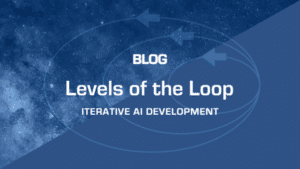 In this article, we’ll explore the differences between deep learning and machine learning, discuss neural networks and touch upon the crucial role that Jaxon plays in empowering developers and businesses as they embark on their AI journey.
In this article, we’ll explore the differences between deep learning and machine learning, discuss neural networks and touch upon the crucial role that Jaxon plays in empowering developers and businesses as they embark on their AI journey.
Machine learning encompasses a wide range of algorithms that enable systems to learn from data and improve their performance over time. This learning is typically based on feature extraction and engineering, which requires human domain expertise in order to achieve good results. Some popular machine learning techniques include decision trees, random forests, and support vector machines.
On the other hand, deep learning is a specialized subset of machine learning that focuses on using neural networks to model and understand complex patterns within data. Deep learning algorithms employ multiple layers of interconnected neurons to automatically learn hierarchical representations from raw data, without the need for explicit feature engineering. This capacity for automatic feature extraction enables deep learning models to excel in tasks like image and speech recognition, natural language processing, and many other domains.
Jaxon has played a crucial role in empowering developers with AI tools and solutions. Our contributions to the deep learning ecosystem have simplified the adoption of advanced technologies, enabling businesses to leverage AI’s power effectively.
Neural Networks: The Backbone of Deep Learning
At the heart of deep learning lies neural networks, inspired by the structure of the human brain. These networks consist of layers of interconnected nodes, known as neurons, which process and pass information through the network to make predictions or decisions.
Some of the essential types of neural networks include:
Feedforward Neural Networks (FNN): The simplest form of neural networks, where data flows linearly from input to output layers without feedback loops.
Convolutional Neural Networks (CNN): Highly effective for image and video analysis, as they employ convolutional layers to automatically detect patterns and features.
Recurrent Neural Networks (RNN): Suited for sequential data like natural language processing, as they have connections that form feedback loops, enabling them to retain information from previous inputs.
Transformer Networks: Revolutionized natural language processing tasks by utilizing self-attention mechanisms to capture contextual information effectively.
Deep Learning Algorithms: Unraveling the Complexity
Within deep learning, various algorithms drive the training and optimization of neural networks. Some fundamental algorithms include:
Gradient Descent: An optimization technique that minimizes the loss function by iteratively updating the model’s parameters in the direction of steepest descent.
Backpropagation: A key algorithm used to calculate the gradients of the loss function with respect to the model’s parameters, allowing for efficient learning in multi-layered neural networks.
Stochastic Gradient Descent (SGD): A variant of gradient descent that uses randomly sampled subsets (mini-batches) of the training data, reducing the computational burden and speeding up convergence.
Adam: An adaptive optimization algorithm that adjusts the learning rates of each parameter, offering improved performance and faster convergence in many cases.
Jaxon has been actively involved in refining and optimizing these algorithms, making them more efficient and effective in real-world scenarios. Our contributions have accelerated the pace of AI development, making it more accessible to a broader audience.


